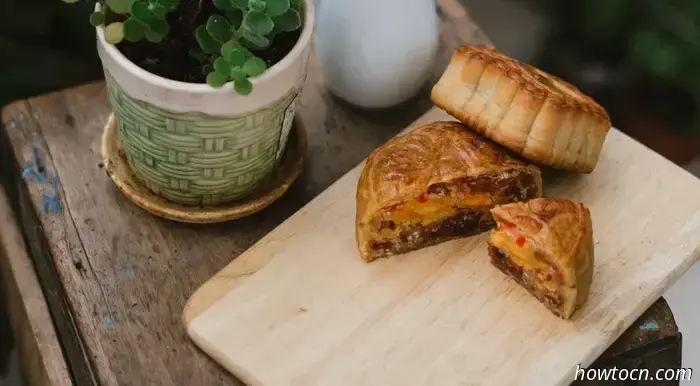
The Mid-Autumn Festival is approaching, falling on October 6 this year, bringing mooncakes back into focus. Available in flavors such as red bean, egg, mixed nuts, or even unconventional fruit combinations, mooncakes can be found everywhere from supermarkets to offices and neighborhoods during this season. Are you weary of eating this local delicacy without knowing its background? It's time to learn more! To enhance your snacking experience, let’s explore the history and unique aspects of the mooncake.
What is it called?
Today known as mooncake, this round treat has been referred to by various names throughout history, including Hu cake, royal court cake, small cake, or reunion cake. Originally, mooncakes were offerings to the moon deity, serving as a form of worship before being consumed.
When was the mooncake first created?
The earliest mooncake is traced back to the Shang dynasty (1600-1046 BC) and is associated with the renowned scholar Wen Zhong. The "Teacher's cake" was created in Zhejiang province in his honor.
How has the mooncake evolved over the years?
Mooncakes have undergone significant transformations over time. When Han Dynasty official Zhang Qian traveled to western China in the second century, he influenced both the flavor and designation of the mooncake. The sesame seeds and walnuts he introduced became staple ingredients. Because these items were harvested in areas populated by ethnic minority groups (or “Hu”), the delicious treat began to be known as “Hu cakes.”
The name was changed again during the Tang dynasty (618-907). Legend has it that Emperor Xuanzong’s concubine, Lady Yang, saw a resemblance between the Hu cake and the full moon, leading to its new name.
Are mooncakes the same across the board?
Mooncakes are not uniform everywhere! Over the years, they have developed distinct regional features. Some popular varieties include those from Beijing, Suzhou, Guangdong, Hong Kong, and Sichuan. Notable regional differences include:
- Beijing-style mooncakes are recognized for their crispy brown shell.
- Suzhou mooncakes have multiple layers of delicate, light pastry encasing them.
- Guangzhou-style mooncakes have thick, soft shells and a variety of filling options.
- In Taiwan, mooncakes sometimes feature sweet potatoes as a filling.
- Hong Kong-style mooncakes (or Cantonese-style) are famous for their double egg yolks and lotus seed paste fillings.
What's an interesting historical fact about mooncakes that might surprise me?
Interestingly, mooncakes have a rebellious history. During the Yuan dynasty (1271-1368 AD), rebels utilized mooncakes to relay messages and plan uprisings. One notable rebel, Liu Bowen, ingeniously wrote the date of the forthcoming rebellion on mooncakes, which were then delivered to resistance groups. The rebels triumphed, and these clever treats were shared among the victors as a reward.


Another Mid-Autumn Festival brings another mooncake to enjoy.